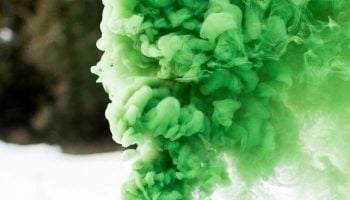The Ultimate Guide to
Microdosing
DMT
Dimitri, The Rogan, The Spirit Molecule, The God Molecule
DMT is a potentially illegal substance, and we do not encourage or condone the use of this substance where it is against the law. This guide is designed to ensure the safety of those who decide to use the substance legally.
Overview
01Therapeutic doses of DMT (30 mg or more, depending on the technique) are extremely potent, often leading to an egoless state that many associate with inner healing.
Psychopharmacologist Rick Strassman called DMT the “spirit molecule,” not only because it occurs naturally in plants and animals but also because of the distinctly spiritual states of mind it generates. These include a sense of bliss, timelessness, and confidence, as well as access to “invisible realms” that feel just as real if not more so as consensus reality—or even more so.[1]
While some believe microdosing DMT misses the point of the experience entirely, others have reported that taking lower, sub-threshold doses has led to increased mindfulness and concentration, the alleviation of depression and anxiety, spiritual growth, and personal transformation.
Master the Skill of Microdosing
Enter your info to start your journey on Third Wave's Microdosing Course! Discover a science-based framework for transformational microdosing.
"The course gave me hope, a new way from what I've read and researched before. It has content which any reader can relate to whether you're an addict, an alcoholic or someone suffering from depression or other mental or spiritual ailments. I now feel empowered to take responsibility for my life!"
-Melissa P.
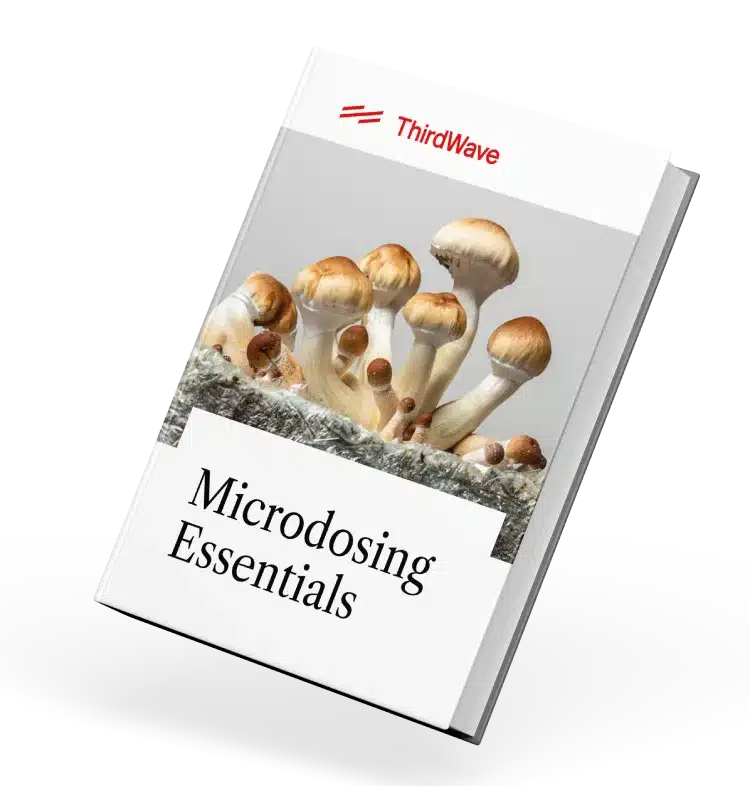

Master the Skill of Microdosing
Enter your info to start your journey on Third Wave's Microdosing Course! Discover a science-based framework for transformational microdosing.
"The course gave me hope, a new way from what I've read and researched before. It has content which any reader can relate to whether you're an addict, an alcoholic or someone suffering from depression or other mental or spiritual ailments. I now feel empowered to take responsibility for my life!"
-Melissa P.
Experience
02How to microdose with DMT
Ideally, a microdose will not cause a substantial change in mood, disposition, or mindset. Instead, its effect will be subtle but present—maybe an increase in focus, decrease in anxiety, or easier access to flow states. For most people the threshold dose of DMT (the dose at which psychedelic effects occur) is between 5-10 mg, but it may be as low as 2 mg according to some reports. We consider a microdose to be anything less than 10 mg.
In line with Strassman’s findings, 0.1 mg/kg (by body weight) should be considered a tentative upper limit for microdosing, since at this dose participants reported an uncomfortable physical tension on the verge of psychedelic effects—similar to the electrically charged sensation of above-threshold doses but without the discharge of a breakthrough psychedelic experience.[2]
In any case, it’s best to start with a very small amount, measured on a precise scale. Since heated DMT tends to leave a residue with its own unique psychoactivity, it’s also important to rinse glass pipes with alcohol and salt to maintain full control over subsequent doses. According to some users, pre-warming the pipe may help to prevent this buildup of residue in the first place.
Method of consumption
Unlike many other psychedelics, including psilocybin and LSD, DMT is metabolized too rapidly to be orally active. This is why ayahuasca contains monoamine oxidase inhibitors (MAOIs) in the form of harmala alkaloids—to inhibit the enzymes that break DMT down. Taken without an MAOI, DMT has to bypass the gut to be effective, whether by smoking, snorting, injecting (IM/IV), or even rectal “plugging.” Since most of these methods are impractical for regular microdosing, and snorting is notoriously painful, most users prefer to smoke it.
It’s important to note that only freebase DMT (usually in the form of white or transparent crystals) can be used for this purpose. In its natural salt form (e.g. tannate, acetate), the molecule breaks down when heated and may even become toxic.[3]
There are various ways to smoke freebase DMT, including in the herbal blend “changa.” This typically contains MAOIs, such as Banisteriopsis caapi (the ayahuasca vine), which alters and prolongs the effects. Another method is to layer DMT between cannabis, which, again, will alter the effects.
To smoke DMT on its own:
- Take a glass oil burner pipe (aka “meth pipe”) and drop DMT into the bowl through the hole in the top
- Before bringing the stem to the mouth, inhale and exhale deeply a few times to oxygenate the lungs
- When you’re ready to smoke, use a lighter to gently heat the bowl from beneath at a distance of 1-2 inches, tilting it from side to side with the stem
- Empty the lungs and inhale the smoke deeply, but as gradually as necessary to avoid coughing
- Hold the smoke in the lungs for 15-20 seconds and exhale
Mixing DMT into the liquids found in vape pens is a newer form of ingestion. The benefit of this is the ease of consumption. And because the intensity of DMT depends on the dose, vaping it can cause hallucinations that are as or more intense than consuming it in more traditional ways—but it can also do the opposite, giving users more control over limiting their doses. However, some believe that vaping DMT isn’t the safest way to consume the drug and should be approached with caution.
Schedule
Given the relatively short duration of DMT’s immediate effects, the time of day doesn’t seem to matter as much as it does for microdosing LSD and (to a lesser extent) psilocybin. But in the spirit of controlled experimentation and collecting meaningful results, it’s recommended to follow a protocol along the same lines as James Fadiman’s. Fadiman recommends taking a microdose once every three days: Take a microdose on Day 1. Then, do not take a microdose on Day 2 or Day 3. On Day 4, take another microdose.
However, there is little to no tolerance effect from DMT, so you don’t have to leave a day or two between doses.[1][4][5] Instead, you may want to limit daily experimentation to a set number of days or weeks before stopping entirely to evaluate and integrate any effects. It may also help to come up with a list of objectives beforehand, as a way of gauging any changes or benefits. Of course, you should not hesitate to stop early if problems arise.
Effects
03Pharmacology
Dimethyltryptamine (DMT) is primarily a serotonin (5-HT) receptor agonist. Like many other chemicals in its class, DMT’s psychedelic actions can mostly be attributed to its effects on the 5-HT2A receptor. It does affect many other receptor types (including dopamine and sigma receptors), but the consequences of these interactions are not well understood.[6]
In a study that administered low, medium, or high doses of DMT to 12 volunteers, the psychedelic threshold for DMT was found to be 0.2 mg/kg. At this level, most biological effects were detectably altered. Adrenocorticotropin hormone, beta-endorphin, prolactin, growth hormone (GH) and cortisol were all elevated. Pupil diameter, heart rate, and blood pressure all peaked within 2 minutes of administration, as did subjective experiences.
A later trial found that the body does not build a tolerance to DMT, meaning there’s no need to take more to repeat the same effects, unlike other psychedelics such as LSD and psilocybin.[3][4]
Benefits and Risks
04Potential Benefits
DMT is actually found in the human brain, so our bodies are accustomed to handling this molecule. In fact, research suggests that DMT has an important role in various processes taking place in the central and peripheral nervous systems. Breakthrough (i.e. full dose) DMT trips are so short-lived because our bodies are so good at metabolizing it. All of this makes DMT a fairly safe compound to ingest—and helps us understand the compound’s potential benefits.
Anecdotally—and in one study—microdosing DMT has been shown to decrease depression, anxiety, and other mood disorders, and could even be used to help treat addiction. Others have used the substance for increased mindfulness and concentration, spiritual growth, and personal transformation.
Risks
The risk of accidentally taking more than intended applies to any psychedelic, but DMT comes on faster and stronger than most. It also tends to be far more physically disorienting; even at low doses, DMT can make it extremely difficult to move around. For this reason, it’s recommended that you use it in a safe, comfortable setting with the option to freely slump backward without hurting yourself. It’s also a good idea to have somewhere safe to put the hot pipe and lighter after use and, at least for the first time, to have someone else present.
Another potential risk associated with microdosing DMT is long-term lung damage or irritation, which may arise from frequent smoking. However, there is no evidence of toxicity, and a lethal dosage has never been reached (nor is it expected to be).[7]
Less common dangers include the potential to trigger stroke[8] or psychosis in vulnerable users, such as the elderly and those with a family or personal history of stroke, heart conditions, high blood pressure, psychiatric conditions, and so on. These dangers are more applicable to full doses, if at all, but could possibly apply to microdosing as well.
DMT significantly affects the serotonin system and should not be taken simultaneously with any of the following substances:
- SSRI’s (any selective serotonin reuptake inhibitor, like Prozac)
- Antihypertensives (high blood pressure medicine)
- Appetite suppressants (diet pills)
- Medication for asthma, bronchitis, or other breathing problems; antihistamines; medicines for colds, sinus problems, hay fever, or allergies (any drug containing dextromethorphan/ DXM or with DM, DX or Tuss in its name)
- CNS (central nervous system) depressants (xanax, ativan, etc)
- Vasodilators
- Antipsychotics
- Barbiturates
- Alcohol
Illegal or recreational drugs that are dangerous to combine with DMT include:
- Cocaine
- Amphetamines (meth-, dex-, amphetamine), ephedrine, MDMA (Ecstasy), MDA, MDEA, PMA
- Opiates (heroin, morphine, codeine, and especially opium)
- Dextromethorphan (DXM)
- Nutmeg
Illegal or recreational drugs that can be dangerous to combine with DMT include:
- Mescaline (any phenethylamine)
- Barbiturates
- Alcohol
- Kratom
- Kava
- 5-MEO-DMT
You can find more detailed information on the risks associated with DMT in our Essential Guide.
Grow 1 Year's Worth of Microdoses in Just 6 Weeks
Third Wave partnered with top mycologists to create the world’s easiest and best mushroom growing program (kit, course, and expert support).
- Pre-sterilized and sealed
(ready to use out of the box) - Step-by-step video and text course
- Access to growing expert in community
- Make your first harvest in 4-6 weeks
- Average yield is 1 - 4 ounces (28-108g)
- Fits in a drawer or closet
- Enter info for Third Wave discounts:
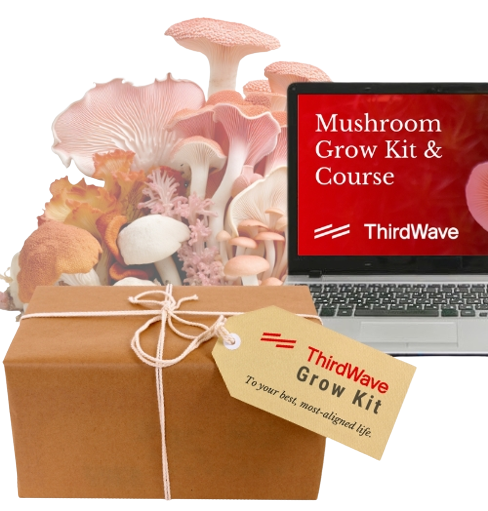
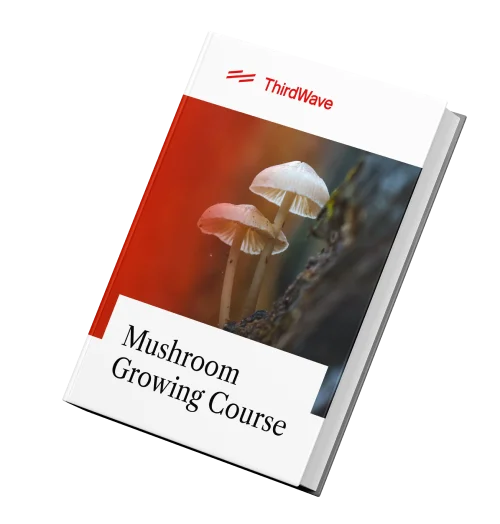
Grow 1 Year's Worth of Microdoses in Just 6 Weeks
Third Wave partnered with top mycologists to create the world’s easiest and best mushroom growing program (kit, course, and expert support).
- Pre-sterilized and sealed
(ready to use out of the box) - Step-by-step video and text course
- Access to experts in community
- Make your first harvest in 4-6 weeks
- Average yield is 1 - 4 ounces (28-108g)
- Fits in a drawer or closet
- Enter info for Third Wave discounts
Therapeutic Use
05Beyond that, the therapeutic value of DMT alone—regardless of dose—has not been explored to the extent that other psychedelic drugs have. Recent studies have also tended to focus on the effects of the DMT-containing ayahuasca brew as opposed to DMT alone. But the isolated molecule is known to activate 5-HT2A receptors (like many psychedelics), as well as dopamine and sigma-1 receptors, among others. Activation of serotonin receptors, in particular, enhances mood and wellbeing, and ayahuasca has been used to treat depression, PTSD, anxiety, grief, and so on—perhaps also by a process of psychological “decentering,” whereby one is able to observe thoughts and emotions objectively or non-judgmentally.
With regard to the psychotherapeutic benefits of DMT alone, in the ‘90s Strassman and his team found that doses of 0.05 mg/kg (injected intravenously) were sometimes associated with mood enhancement and feelings of relaxation and physical warmth.[2]
Current research is finding similar benefits. According to Robin Carhart-Harris at Imperial College London, DMT may represent a more economically viable alternative to other psychedelic therapies because of its much shorter-acting time, requiring fewer staff hours for supervision.[9] It should be noted, however, that Carhart-Harris is referring to 20 mg (moderate) doses here and not microdoses.
As with other psychedelics, low doses of DMT could also help to alleviate cluster headaches.[10]
Are you feeling drawn to work with plant medicines? Third Wave’s vetted Psychedelic Directory offers an honest, in-depth guide to safely accessing these substances.
Personal Growth
06Others who have microdosed DMT for longer tend to consider it a powerful nootropic. At 10 mg, it has been found to increase mindfulness and concentration even better than LSD, and may be useful for meditation—although at this relatively high dose it also causes closed-eye visuals (CEVs).[12] Some have also reported feeling less judgmental of themselves and others, not only on the day of the microdose but for a day or two after as well.[13] Depression may be lifted, anxiety may be eased, and colors and visual acuity may be subtly enhanced.[14][15][16] According to one DMT microdoser (at doses from 0.5 – 5 mg), there was also the sense that “we’re all eternal souls hanging around infinity.”[17]
Some users find doses of 10 mg and below to be even more personally transformative than breakthrough doses. It is, they say, possible to bring more back from lower doses, and, according to one user, there’s a greater sense of “authorship” over realizations, “like being offered a koan to mull over instead of a direct statement.”[18] This same user was motivated to make important (and long-delayed) life changes after microdosing DMT. Low doses “have less of a toll on your psyche,” said another; effects are “easier to integrate but seem more short term as well.”[16] Low doses could also be useful for preparing one for a breakthrough dose (if only by easing anxiety and priming the lungs).
Macrodosing
07It’s these states that are largely associated with DMT’s deep healing abilities. In fact, Strassman called DMT the spirit molecule for a reason—DMT has a propensity for creating god- or spirit-like hallucinations. Studies show that the more mystical a trip is, the more healing the tripper receives. As such, it’s believed that DMT’s ability to make users “see God” could be the key to its healing powers.
While low doses of DMT primarily affect physical and emotional states with few to no perceptual hallucinations, higher doses typically produce rapid kaleidoscopic images full of intensely “techno-colored” abstract and representational displays. Out-of-body experiences, or dissociation of awareness from the physical body, is very common with DMT at higher doses. Many people consider this a hallmark of the DMT experience.
Beyond LSD and Psilocybin is a field. This guide will take you there.
In Third Wave’s Ultimate Guide to Safely Sourcing Psychedelics, you will discover an astonishing menu of psychedelic medicines…
…and how to source them without legal risk.
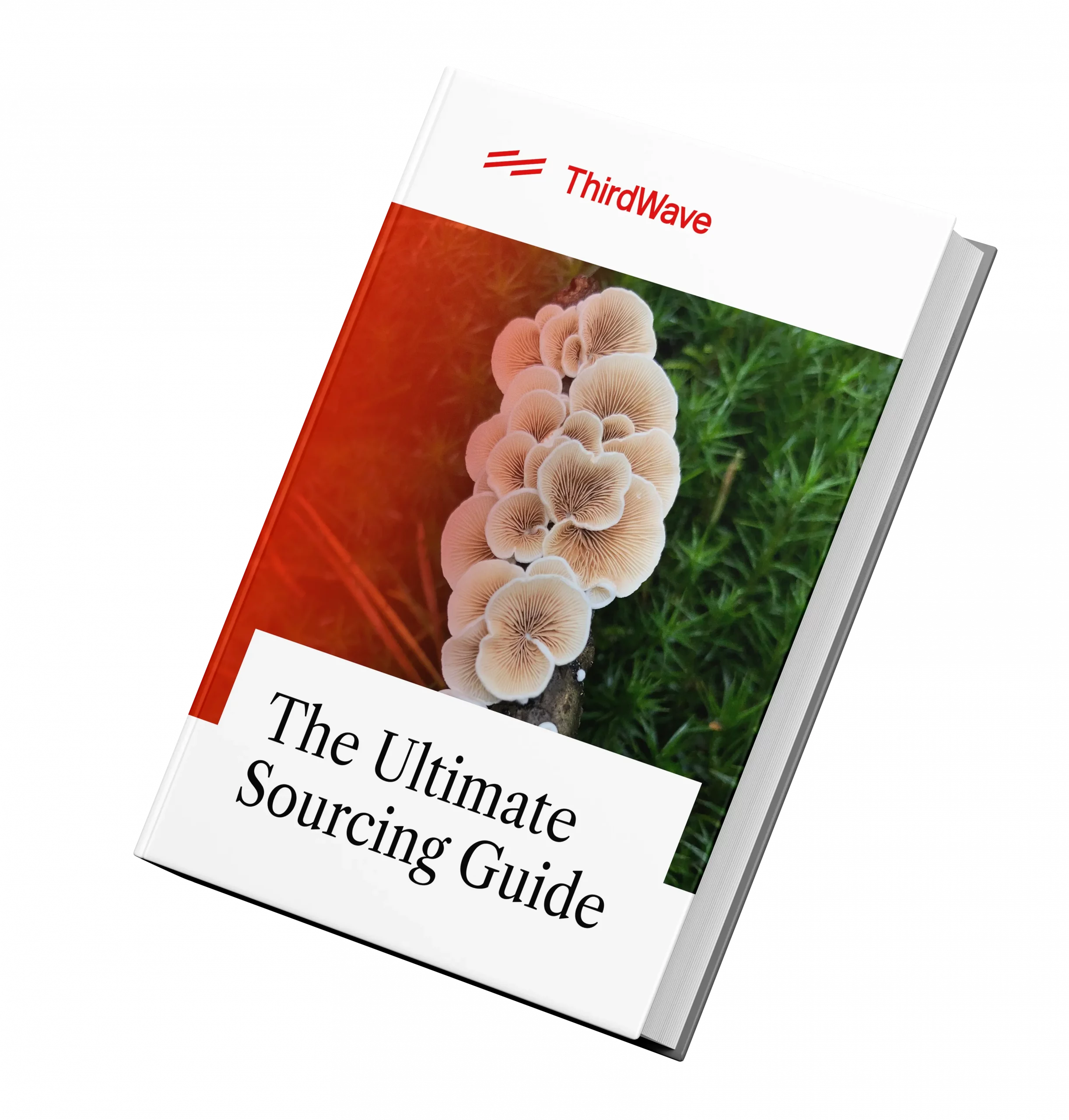

Beyond LSD and Psilocybin is a field. This guide will take you there.
In Third Wave’s Ultimate Guide to Safely Sourcing Psychedelics, you will discover an astonishing menu of psychedelic medicines…
…and how to source them without legal risk.
Legality
08Getting started with psychedelics and finding consistent legal access is a challenge. That’s why we built an online community of trusted providers ranging from therapists to clinics, to retreats. We hope you find what you’re looking for.
History & Stats
09The chemist Richard Helmuth Fredrick Manske is credited as the first to synthesize dimethyltryptamine in 1931. But it was Dr. Stephen Szara who, inspired by visiting South American religious ceremonies, first demonstrated in 1956 that the drug induces hallucinations, illusions, distortions of spatial perception and body image, disturbances of thoughts, and euphoria in humans.
The first wave of clinical research followed in the 1950s and 1960s, gaining momentum with the discovery in 1965 that DMT can be found in the blood and urine of humans. Following the passage of the Controlled Substances Act in 1970, research into psychedelics waned in both the United States and Europe for many years.
Rick Strassman pioneered contemporary research into psychedelics in the 1990s with the belief that their profound effect on consciousness warranted further exploration. He published a number of landmark studies including detailed dose-response experiments using the Hallucinogen Rating Scale to measure subjective experiences. Strassman later published The Spirit Molecule in 2000, widely considered a landmark book on DMT. This new interest continued with the publication of Tihkal, by Alexander and Ann Shulgin, which details the use and effects of tryptamines, a class of drugs that includes DMT.
The Global Drug Survey’s 2012 report found that among 22,000 respondents, the lifetime use rate of DMT was about 9%. The most common route of administration reported in the survey was smoking the substance as an herbal mixture (92%), as opposed to consuming as an ayahuasca brew, for example.
An Australian study conducted in 2010 that surveyed 121 people who had previously experienced DMT found that smoking DMT was by far the most common route of administration (98.3%), with a much smaller proportion reporting use of ayahuasca (30.6%). The reasons given for trying DMT were out of general interest in hallucinogens or curiosity about its effects, while almost one-third of respondents cited the possible psychotherapeutic benefits of the drug. An increase in psychospiritual insight was the most commonly reported positive effect of both smoked DMT and ayahuasca.[19]
Information from Winstock et al, 2013 [20]
FAQ
10Where can I get DMT?
DMT is probably illegal where you live, but the raw materials (such as Mimosa hostilis/tenuiflora root bark or Psychotria viridis leaves) may not be. Extracting DMT, which you can read about here, is fairly straightforward—although it is of course illegal in most places, and not without risk.
How should I store it?
Extracted DMT should be stored in an airtight container and kept in a cool, dark, dry place. Storing it in an opaque or foil-wrapped vial in the freezer is ideal.
Although properly stored DMT should remain stable for several years, there is a chance that it may oxidize into DMT-N-oxide—sometimes indicated by a yellow color (although DMT may also be yellow) and different, perhaps unpleasant psychoactive effects. If this happens, you’ll be able to convert it back into DMT using zinc dust.
Some prefer to convert freebase DMT into the more stable salt DMT fumarate for long-term storage, converting it back into freebase for use.
Can DMT be detected in a drug test?
DMT is not screened for in either standard or extended drug tests, nor is it likely to trigger a false positive for any of the drugs that are.[21]
Can I test my DMT for safety?
Testing your DMT is always good practice even when you trust your supplier. Reagent test kits from Bunk Police can identify hundreds of adulterants and substitutes—offering peace of mind and potentially saving your life.
The Hofmann and Mecke reagents, for example, can help identify real DMT. Simply place a tiny amount of DMT into a sterile test tube or onto a sterile white ceramic surface and add a few drops of the reagent. Then check the color change (or lack thereof) against the supplied spectrum booklet.
Is microdosing DMT illegal?
Usually. Extracted DMT is illegal in almost all countries, including the United States.
Is microdosing DMT safe?
Although DMT may be unsuitable for those with certain conditions and in combination with certain drugs (see Risks), it is known to be non-toxic even at very high doses. That said, relatively little is known about the harm potential of long-term, frequent use—although anecdotally it appears to be safe.
How do I get started with microdosing?
There are lots of things to cover before you get started with microdosing—including the reasons you’re interested in the first place!
Sign up to our extensive microdosing course to gain access to curated materials that will help you design the ideal microdosing regimen for your needs. You’ll also gain access to an exclusive community of enthusiastic, helpful microdosers.
DMT-specific forums, including the excellent DMT-Nexus (which has its own wiki) and the DMT subreddit, are also good resources to help you get started.
Getting started with psychedelics and finding consistent legal access is a challenge. That’s why we built an online community of trusted providers ranging from therapists to clinics, to retreats. We hope you find what you’re looking for.
Footnotes
11[1] Strassman, R. (2001). DMT: The Spirit Molecule. Rochester, VT: Park Street Press.
[2] Strassman, R. J., Qualls, C. R., Eberhard, H., Kellner, R. (1994). Dose-Response Study of N,N-Dimethyltryptamine in Humans: II. Subjective Effects and Preliminary Results of a New Rating Scale. Archives of General Psychiatry, 51(2), 98-108.
[3] DMT-Nexus Wiki. (2016, Apr 14). FAQ – DMT Frequently Asked Questions and Troubleshooting Guide / Are there different types of DMT? Retrieved from https://wiki.dmt-nexus.me/FAQ#Are_there_different_types_of_DMT.3F.
[4] Shulgin, A., Shulgin, A. (1997). TiHKAL: The Continuation. Berkeley, CA: Transform Press.
[5] Smith, R. L., Canton, H., Barrett, R. J., Sanders-Bush, E. (1998). Agonist Properties of N,N-Dimethyltryptamine at Serotonin 5-HT2A and 5-HT2C Receptors. Pharmacology Biochemistry & Behavior, 61, 3, 323-330.
[6] Breaking Convention. (2017, Jul 9). David Nichols – DMT And The Pineal Gland: Facts vs Fantasy. [Video]. Retrieved from https://www.youtube.com/watch?v=YeeqHUiC8Io.
[7] Erowid. (2017, Feb 14). LD50s & Material Data Sheets. Retrieved from https://www.erowid.org/psychoactives/health/psychoactives_ld50s.shtml.
[8] Jalaxaposse. (2015, Jan 10). Hemorrhagic brain stroke while smoking DMT – health and safety issues #1 [Online forum comment]. Message posted to https://www.dmt-nexus.me/forum/default.aspx?g=posts&t=62514.
[9] Bryant, B. (2017, Jul 2). The brain on DMT: mapping the psychedelic drug’s effects. Retrieved from https://www.wired.co.uk/article/mapping-brain-dmt-psychedelic-drugs.
[10] BananaForeskin. (2010, Aug 15). Possibly taking a small dose of DMT daily? #25 [Online forum comment]. Message posted to https://www.dmt-nexus.me/forum/default.aspx?g=posts&m=168668#post168668.
[11] Korfhage, M. (2017, Apr 21). I Tried Microdosing With Four Different Psychedelic Drugs. Here’s What Happened. Retrieved from http://www.wweek.com/culture/2017/04/18/i-tried-microdosing-with-four-different-psychedelic-drugs-heres-what-happened/.
[12] ovideata. Microdosing DMT [Online forum comment]. Message posted to https://www.reddit.com/r/Nootropics/comments/4g8dok/microdosing_dmt/.
[13] someoneNotMe123. DMT [Online forum comment]. Message posted to https://www.reddit.com/r/microdosing/comments/3kusph/dmt/.
[14] Doc Buxin. (2015, Apr 7). Daily use of DMT #22 [Online forum comment]. Message posted to https://www.dmt-nexus.me/forum/default.aspx?g=posts&m=623632#post623632.
[15] jellyindwin. (2015, Apr 7). Daily use of DMT #24 [Online forum comment]. Message posted to https://www.dmt-nexus.me/forum/default.aspx?g=posts&m=623663#post623663.
[16] anrchy. (2013, Apr 25). Highdose = Hyperspace. Low dose = Inner space #11 [Online forum comment]. Message posted to https://www.dmt-nexus.me/forum/default.aspx?g=posts&m=449757#post449757.
[17] Doc Buxin. (2015, Apr 7). Daily use of DMT #16 [Online forum comment]. Message posted to https://www.dmt-nexus.me/forum/default.aspx?g=posts&m=622315#post622315.
[18] ZenSpice. (2013, Apr 24). Highdose = Hyperspace. Low dose = Inner space #6 [Online forum comment]. Message posted to https://www.dmt-nexus.me/forum/default.aspx?g=posts&m=449513#post449513.
[19] Breaking Convention. (2017, Jul 10). Dennis McKenna – Is DMT A Neurotransmitter For The Gaian Brain? [Video]. Retrieved from https://youtu.be/M8AXSBvSkCQ.
[20] Winstock, A. R., Kaar, S., & Borschmann, R. (2013). Dimethyltryptamine (DMT): prevalence, user characteristics and abuse liability in a large global sample. Journal of Psychopharmacology. Retrieved From
https://journals.sagepub.com/doi/full/10.1177/0269881113513852?url_ver=Z39.88-2003&rfr_id=ori:rid:crossref.org&rfr_dat=cr_pub%20%200pubmed
[21] Erowid. (2015, Feb 10). DMT Drug Testing. Retrieved from https://erowid.org/chemicals/dmt/dmt_testing.shtml.
Everything you need to know about Microdosing in one place
Download our FREE guide to learn how to begin a microdosing regimen, calibrate your dose level, and get the most out of your experience.
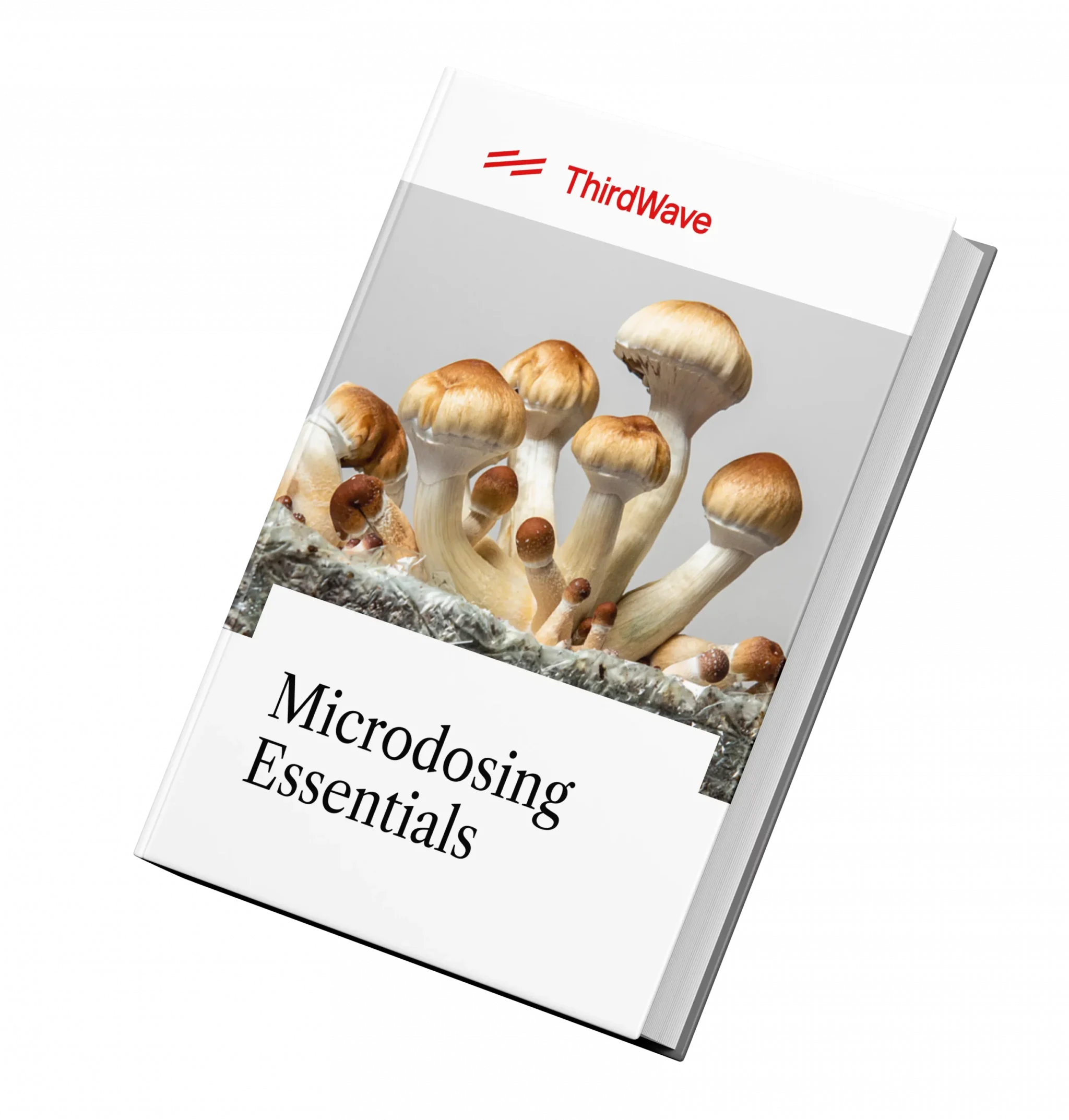
“This FREE Guide was just what I needed to take the first step into Microdosing. AND IT WAS THE BEST DECISION OF MY LIFE! After starting my microdosing regiment I now have more focus, energy and clarity into what it is I truly want in this world.”
James, New York

Everything you need to know about Microdosing in one place
Download our FREE guide to learn how to begin a microdosing regimen, calibrate your dose level, and get the most out of your experience.


